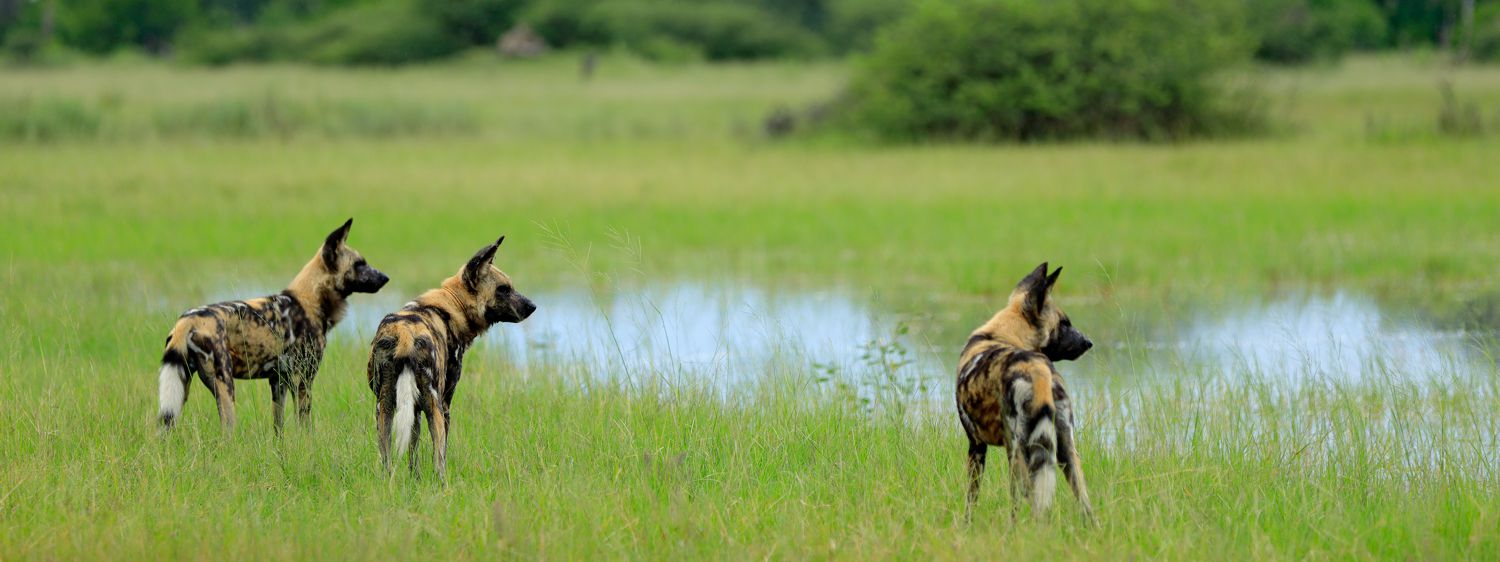The African Wild Dog (Lycaon pictus), also known as the painted wolf or Cape hunting dog, is one of Africa’s most fascinating and endangered carnivores. With its mottled coat of black, white, and ochre patches, each individual has a unique pattern—like a fingerprint in fur. These striking markings, along with their large rounded ears and lean, long-legged build, make them instantly recognizable on the African plains.
Behaviour and Social Structure
African Wild Dogs are highly social animals, living and hunting in tight-knit packs that can range from 2 to over 20 individuals. Their social bonds are incredibly strong, and they are known for their cooperative nature. Unlike many other predators, wild dogs care for sick or injured pack members and regurgitate food for pups and adults alike.
They are also among the most efficient hunters in Africa, with a success rate of up to 80%—far higher than lions or hyenas. Their hunting strategy relies on teamwork, stamina, and communication. Packs often hunt at dawn or dusk, using coordinated chases to exhaust their prey, which typically includes antelope such as impala or kudu.
Habitat and Distribution
African Wild Dogs once roamed across most of sub-Saharan Africa, but today their range has dramatically shrunk. They are now primarily found in fragmented populations across Botswana (especially in the Okavango Delta), Namibia (notably in the Zambezi Region and parts of Etosha), Zimbabwe, Tanzania (including the Selous Game Reserve and Ruaha National Park), Mozambique and South Africa (notably in Kruger National Park and surrounding reserves).
They prefer open plains, savannas, and lightly wooded areas where they can use their speed and endurance to hunt effectively.
Conservation Status
The African Wild Dog is classified as Endangered by the IUCN. With fewer than 6,000 individuals left in the wild, their survival is threatened by habitat loss, human-wildlife conflict, and diseases like rabies and distemper transmitted by domestic dogs. Conservation efforts are underway across southern and eastern Africa, including protected reserves, community-based wildlife programs, and cross-border conservation initiatives.



